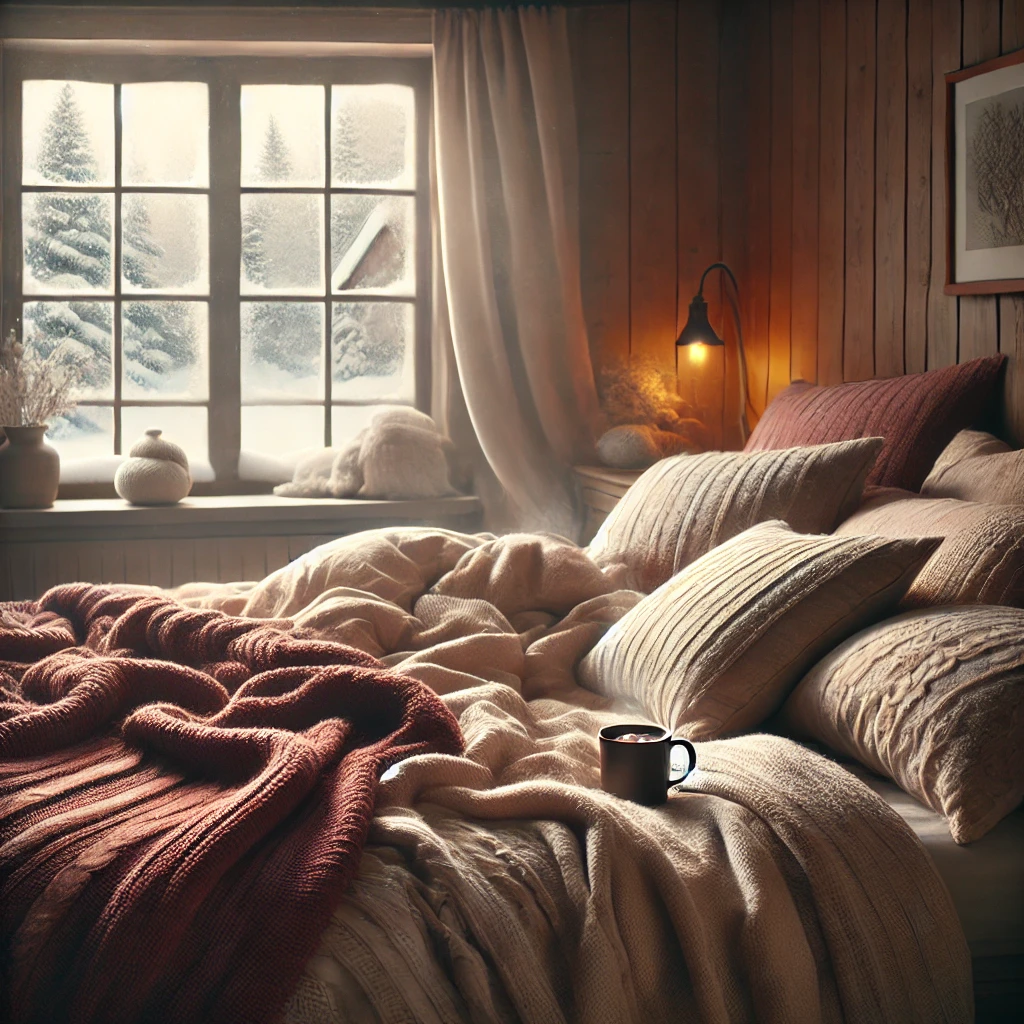
How to Choose the Best Warm Sheets for Winter
There’s nothing more comforting than waking up on a cold winter morning, all snug in your bed. The right sheets can help you stay warm and cozy, allowing you to enjoy the comfort of your bed while the world outside is chilly.
As the temperatures drop, it’s time to replace your light, summer bedding with sheets that are more suited for winter. But how do you know which sheets will keep you the warmest during those cold nights?
The perfect set of bed sheets involves various factors such as weight, material, thread count, and finish. These elements all come together to create a cozy, comfortable sleeping environment. The right sheets can prevent you from waking up during the night due to temperature changes, keeping you warm all night long.
What Type of Bed Sheets Are Best for Winter?
When choosing sheets for colder weather, the material is one of the most important factors to consider. Let’s take a closer look at the most popular sheet materials and how they perform in terms of warmth.
#1 Cotton (Especially Flannel)
Cotton is the primary material for many types of bedding. Depending on factors such as the origin of the cotton, the weave, and the thread count, cotton sheets can vary in texture and warmth. Common types of cotton sheets include brushed cotton, jersey cotton, and flannel cotton.
While brushed cotton sheets provide extra softness and warmth by being lightly napped on one side, flannel sheets are the ultimate choice for winter. Flannel’s double-napped fabric provides extra fluff and heat retention, making them perfect for staying warm throughout the night.
#2 Silk
Silk is often associated with luxury, as it’s made from the threads of silkworms, with the highest quality being mulberry silk. Although silk is known for its cooling properties, it might not be the best option for winter nights. It tends to be more breathable, which may prevent it from trapping heat as well as flannel. However, if you’re looking for a luxurious option for your pillowcase, silk can provide a soft and gentle touch.
#3 Tencel™ Lyocell
Tencel™ Lyocell is a sustainable, eco-friendly fabric made from recycled wood pulp. It’s known for being soft, breathable, and hypoallergenic. Tencel™ sheets have moisture-wicking properties, making them an excellent choice for those who tend to sleep hot. However, they may not provide as much warmth as flannel or cotton, so consider this material if you tend to overheat during the night.
#4 Polyester
Polyester sheets are an affordable option, but they may not regulate temperature as well as natural materials. They tend to trap heat, which can lead to discomfort for those who overheat easily. However, polyester sheets are highly wrinkle-resistant and durable, making them a good option for people who prefer low-maintenance bedding.
Flannel: The Clear Winner for Warmth
When it comes to warmth, flannel sheets take the top spot. Known for their fluffy, soft texture, flannel sheets trap heat effectively and create little air pockets that help retain body warmth. If you’re looking for the warmest, coziest sheets to keep you toasty during the winter, flannel is the way to go.
However, keep in mind that your personal sleep preferences matter. If you tend to sleep hot, a lighter option like brushed cotton or silk might be better suited for you. It’s essential to find the balance that works best for your comfort level.
How Does Thread Count Affect Warmth?
Thread count refers to the number of threads woven into one square inch of fabric. Higher thread counts are often associated with better quality sheets, but this doesn’t always mean better warmth. In fact, a higher thread count can make the fabric thicker and less breathable, potentially leaving you too warm.
To find the perfect balance of comfort, look for sheets with a thread count in the mid-range. This will allow for a cozy and breathable option without being too thick or too thin.
Durability: Important for Long-Term Comfort
While warmth is a key factor in choosing winter sheets, durability is just as important. You want sheets that can withstand frequent washing and wear, especially if you plan on using them for several winters. Cotton sheets are generally easy to care for and hold up well over time, while materials like silk may require extra care.
Tips for Layering Your Bedding for Extra Coziness
Just like dressing in layers during the winter, layering your bedding is a great way to stay warm. Add a fluffy duvet or blanket on top of your sheets for an extra layer of warmth. Layers allow you to adjust your bedding to match the fluctuating temperatures, so you won’t overheat or feel too cold.
Here are some layering options for a cozy bed:
- Mattress topper: Adds cushioning and an extra layer of warmth.
- Your sheets: Choose sheets that keep you warm but aren’t too heavy.
- Duvet or comforter: Choose a duvet with an appropriate weight to match the temperature.
- Throw or blanket: Add an extra layer that can be removed on warmer nights.
By layering your bedding, you can maintain a comfortable temperature without waking up in the middle of the night due to overheating or getting too cold.
Keep Cozy in Winter with Warm Sheets from Casper
Ultimately, the best winter sheets are the ones that work for your individual needs. If you find flannel sheets too warm, opt for a lighter option like silk or brushed cotton. You can also adjust your bedding layers to suit your comfort level and sleep preferences.
At Casper, we offer a variety of cozy bedding options designed to help you stay warm all winter long. Whether you prefer soft flannel or breathable cotton, we have everything you need to create the perfect sleep environment for a restful night.